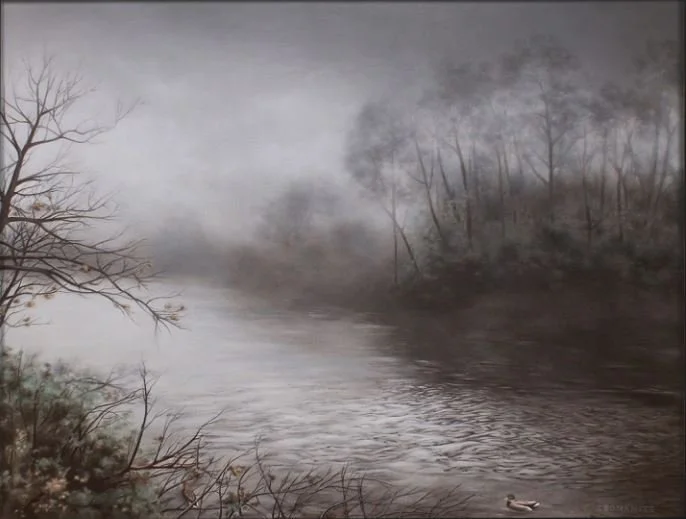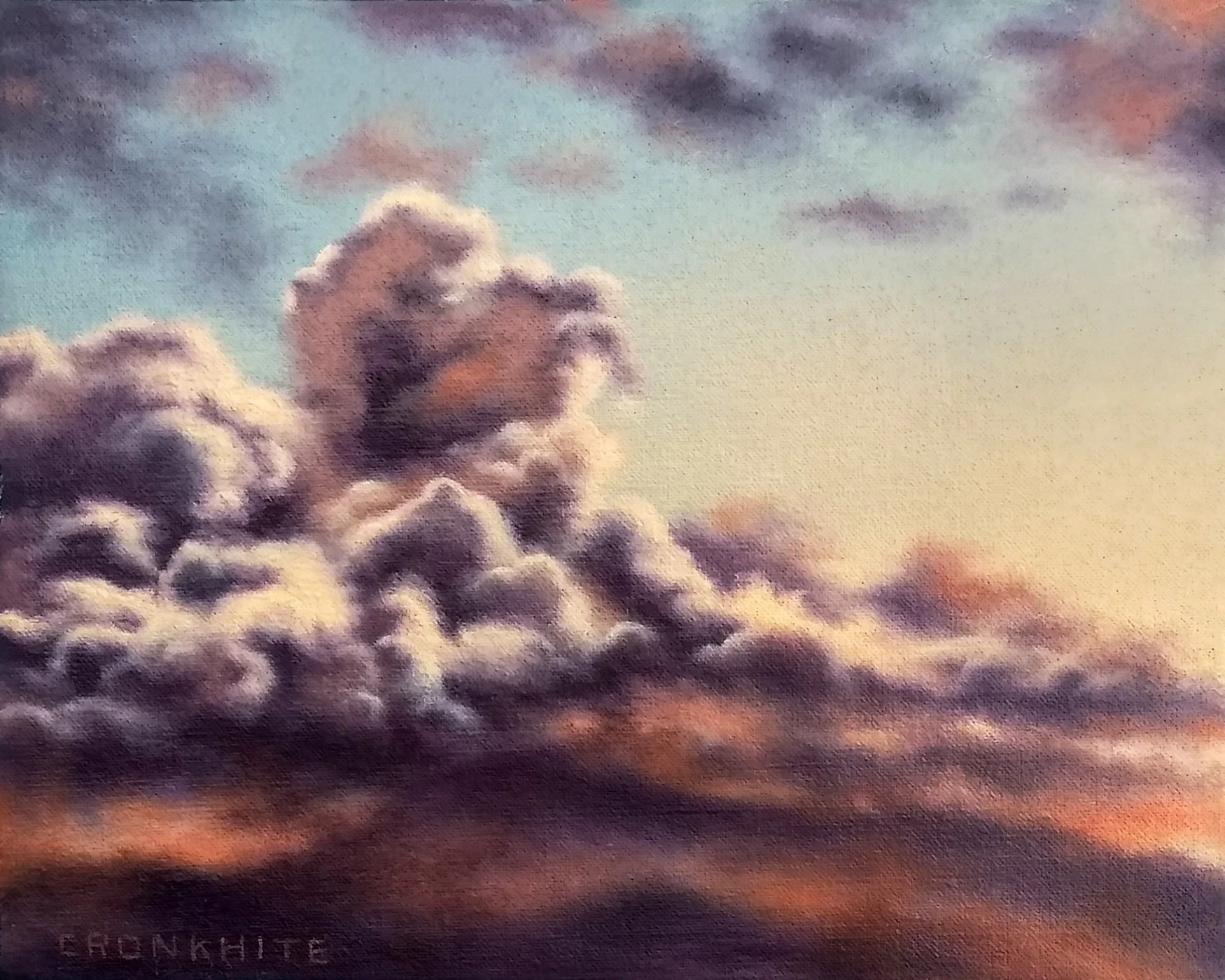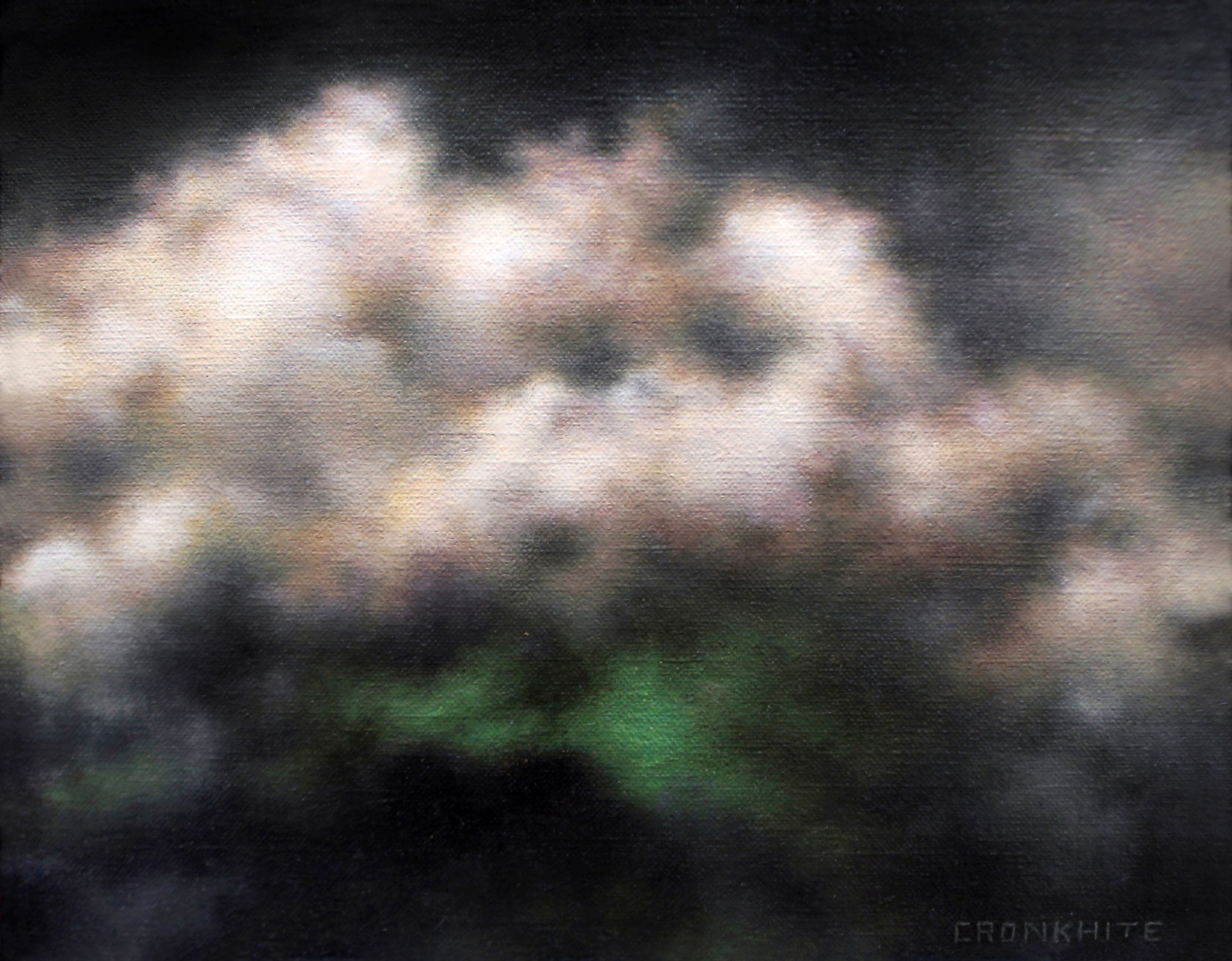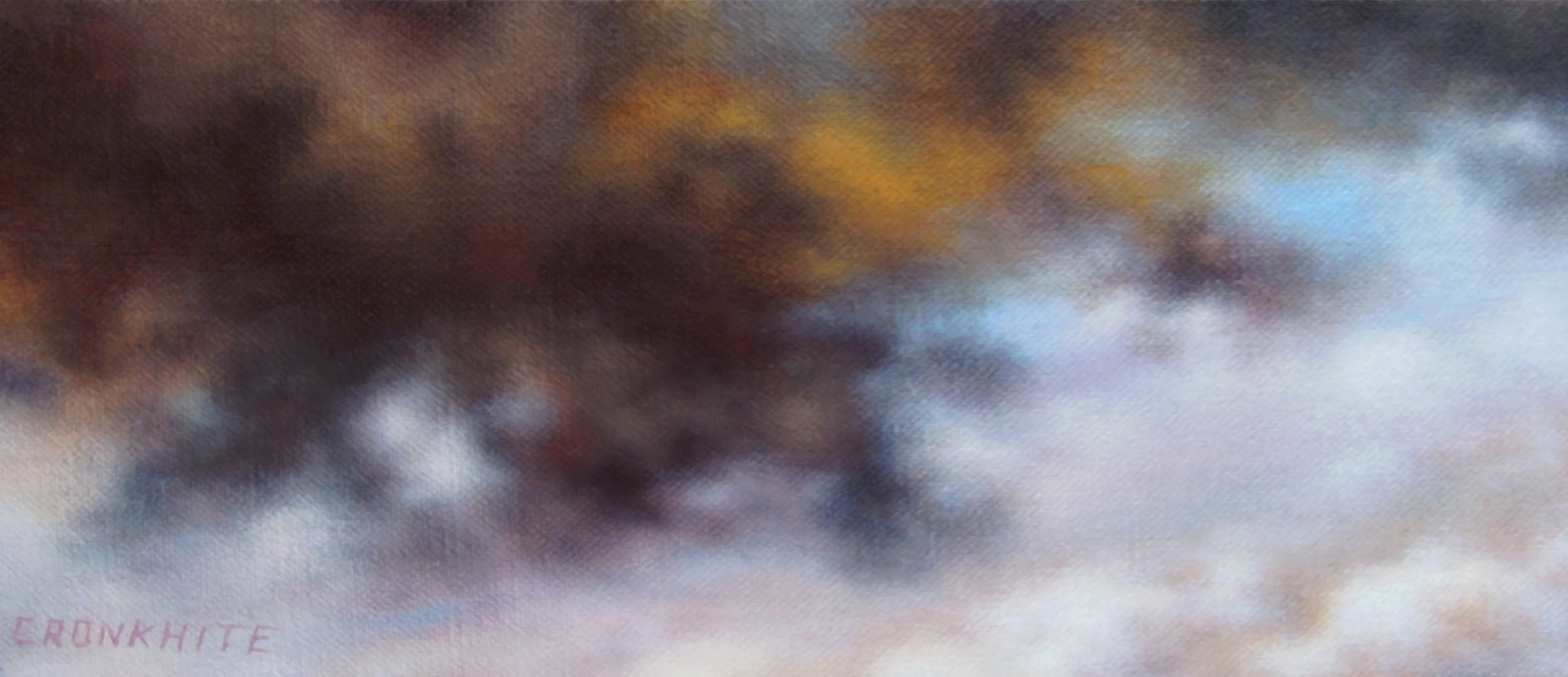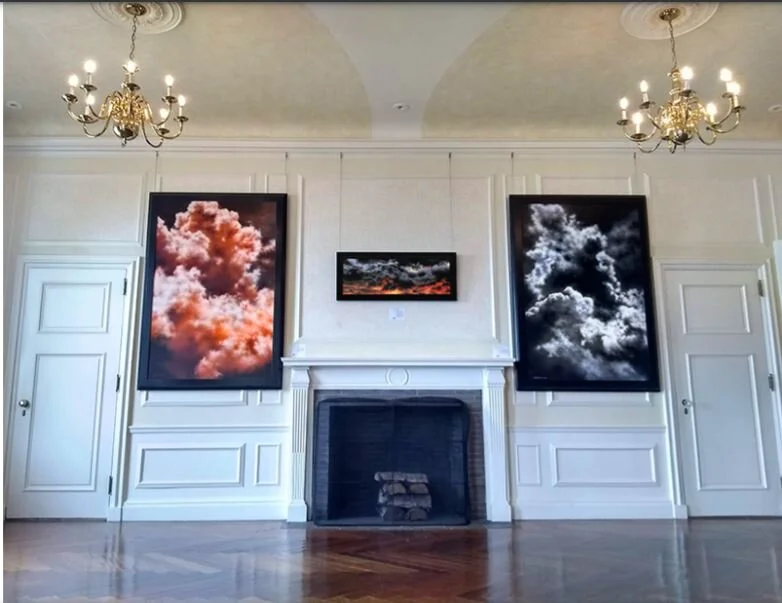
Artist Statement
The Romantics sought to seize each moment and explode it to its epic potential. In the same way I have tried to use my painting to capture cloudscapes when they've reached their peak volume--the immediate prelude to the violence and release of storms, with all the emotion that lies therein. At the same time, I have tried to convey that sense of tension and expectation using colors, contrasts, and forms associated with realism and at a size and scale that brings the viewer into the storm, looking at it so closely that it becomes abstract and Expressionistic, directing the eyes to the exaggerated shapes and vibrant, saturated hues. In fact, the larger-than-life size of the paintings is a vital element of my purpose, which is to fill viewers' peripheral vision and envelop them in the movement and kinetic energy of a storm. The effect is both Romantic and hyper-realistic, ephemeral and concrete.
When I tell people that I paint clouds, I'm aware that this is a simplification. The path that got me here is more complex, of course, beginning with visits to the DIA's Dutch collection, particularly van Ruisdael's The Jewish Cemetery, in which the sky plays a central role in setting the mood of the painting. Monet, in his Lily Pond series, depicts the sky and clouds reflected in the water, opening up the paintings to the natural world beyond the immediate scene. Later, when German Expressionism placed viewers directly inside the scene with an almost myopically close view, color and shape became paramount because artists were trying to convey the intense emotions they had experienced and wanted viewers to feel the same emotions just as strongly. While German Expressionist works are simpler and painted more quickly than more carefully constructed works like mine, I share their desire to capture the excitement and drama of experiencing moments in nature. These are the movements that led me to create my cloud series, and they remain my strongest inspirations for future works.
